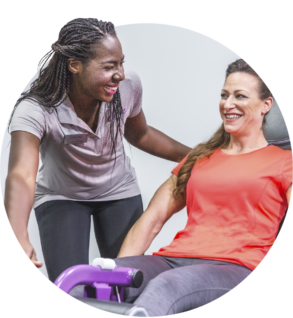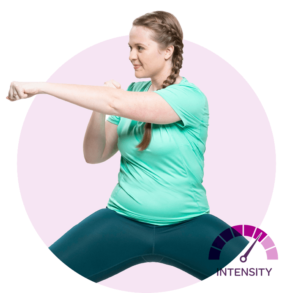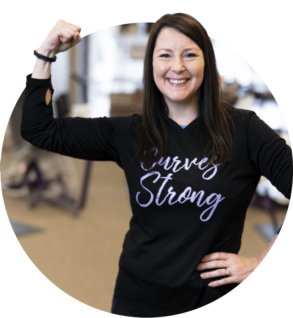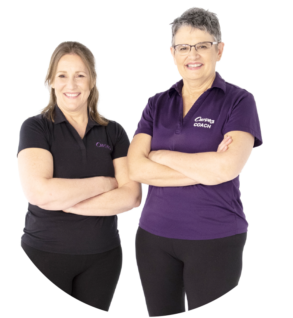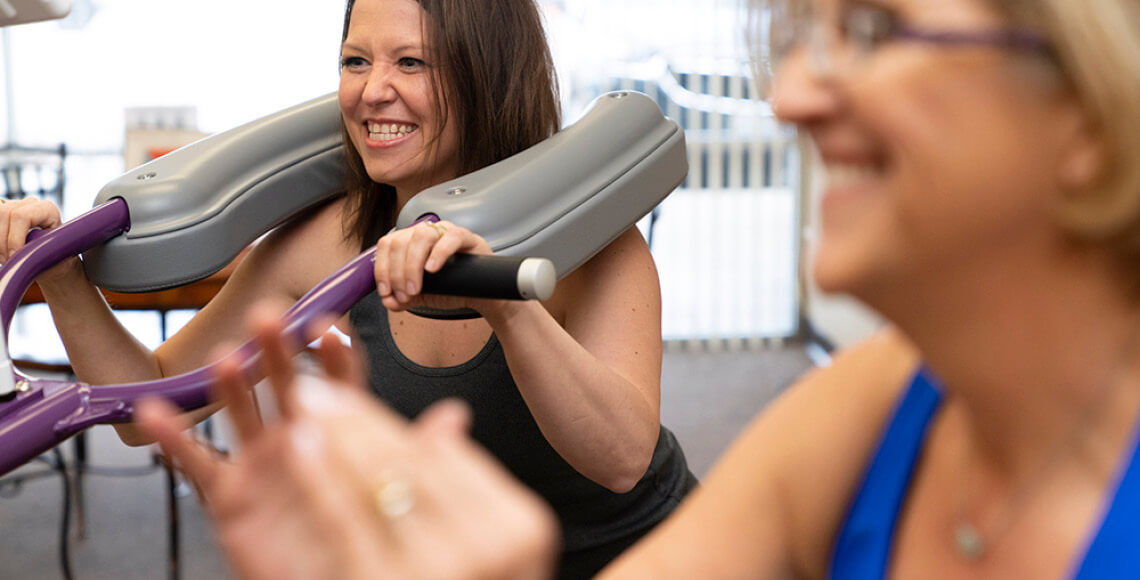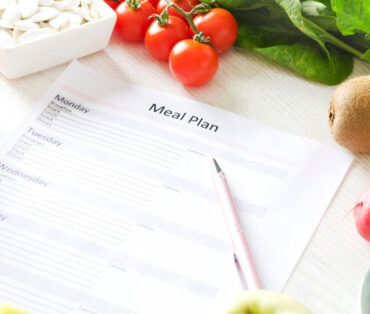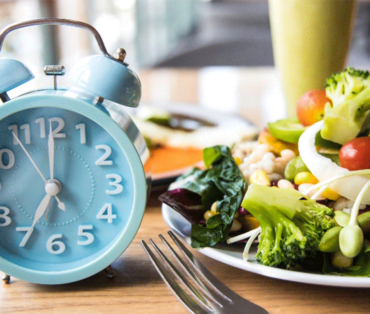Beyond Calcium—Building Strong Bones
Make no bones about it—osteoporosis is a serious health issue. Roughly one in every two women in the United States over the age of 50 will break a bone because of this disease.7 When you were a kid, if you broke your arm falling off a bike, the doctor set it in a cast and six weeks later, you were good as new. When you’re older, recovery from fractures and breaks can be slow and painful.
It’s never too late to boost your bone strength, and it becomes even more critical when, post menopause, your level of protective estrogen drops. After all, you want to keep up with your Curves whole body workout. To strengthen your bones, follow this 4-step strategy.
Be a dairy aficionado
Calcium rules when it comes to building strong bones, and the best source of calcium is dairy. An 8-ounce glass of low-fat milk or a typical 6-ounce container of low-fat yogurt delivers roughly 300 mg of calcium. Greek yogurt, however, contains about 200 mg of calcium—still plenty, but keep that in mind when you’re calculating calcium intake. Women under 50 should get 1,000 mg a day and 1,200 mg if you’re over 50. It’s best to get calcium through a healthy meal plan. But if you can’t get enough through food, which you might not if you are following a weight loss eating plan, take a calcium supplement along with vitamin D and magnesium for the best absorption.
Other foods rich in calcium1 you should add to your healthy diet are canned salmon or mackerel with bones, broccoli, leafy greens, Chinese cabbage, and fortified foods. Spinach—though rich in calcium—contains oxalic acid, which prevents absorption.
Get what you need in Vitamin D
D is the king of vitamins for bone health. It helps with absorption of calcium from food, and it pulls calcium into the bone. Getting adequate vitamin D also helps prevent falls because it helps with muscular function. Many of us don’t get adequate vitamin D, even when we follow a healthy eating plan. It’s available in only a few foods and, though our body can make vitamin D when exposed to sunlight, sunscreen interferes. You need UV rays to make vitamin D, and when you block them, you prevent vitamin D synthesis.
The United States Institutes of Medicine2 recommends 600 IU daily for children and adults (800 if you are over 70), and the National Osteoporosis Foundation3 advises women over 50 consume 800 to 1,000 IU a day as part of a healthy eating plan.
Dietary sources of vitamin D: The only truly good dietary sources of vitamin D are fortified milk and fatty fish, such as salmon, tuna, and mackerel. An egg yolk provides a modest 44 IU of vitamin D, fortified cereals and beverages may have added D as do calcium supplements.
If you think you’re not getting enough D from foods, talk with your doctor about whether you should get a blood test and perhaps take supplements if your level is low.
Fill up on fruits and vegetables
Other nutrients that nurture bone health include magnesium, potassium, vitamin C, and vitamin K, and the best sources of these vitamins and minerals are fruits and vegetables. Bone is living tissue, and it needs a variety of nutrients for optimal health and function.
Some top picks in produce:4 Eat a wide variety of vegetables and fruits including dark green, leafy vegetables such as kale, collard greens, broccoli rabe, and Bok Choy; soy beans; broccoli; dried figs; and oranges.
Strengthen your bones with exercise
Weight bearing activities, such as strength training, running, jumping rope, dancing—anything you do on two legs that requires your body to support your weight against the forces of gravity as you move—may help increase bone density. As you impact the ground, stress is felt in your bones from your feet on up your spine, and that stress stimulates bone building.
In addition, the National Osteoporosis Foundation5 recommends you engage in the following four types of exercises as part of your workout plan:
Posture exercises: These exercises work to improve your posture, preventing rounded or sloping shoulders. They can help reduce your risk of breaking a bone, especially in your spine.
Spine-strengthening exercises: These exercises help strengthen muscles in your hips and back.
Balance exercises: These exercises strengthen your legs and improve your balance. They help prevent falls. For balance, consider regularly attending the Curves Balance Class.*
Functional exercises: Functional exercises help strengthen your core and help improve your function in everyday activities. They also help reduce risk of falls.
Resistance training, like the kind you do as part of your full body workout at Curves ladies only gym, also puts load on your bones and is another good way to deepen density.
Osteoporosis is a serious health concern, especially for women. Approximately 10 million Americans6 have osteoporosis, and another 44 million have low bone density, which places them at increased risk for the disease. Following a healthy eating plan rich in calcium and vitamin D and engaging in a full body workout are important for preventing this disease throughout your entire life. You reach peak bone mass in your early 20’s—the higher your bone mass at that time, the lower your risk of osteoporosis later. Unfortunately, those who are most lacking calcium in their diets are girls and young women. So, as you steer your own healthy eating plan and exercise routine toward building stronger bones, consider guiding your daughter or granddaughter toward regular exercise and bone-building foods, too.
*Scheduled at participating locations only.
Sources:
- National Osteoporosis Foundation: Calcium and Vitamin D
- National Institutes of Health: Vitamin D
- National Osteoporosis Foundation: Calcium and Vitamin D
- National Osteoporosis Foundation: Calcium and Vitamin D
- National Osteoporosis Foundation: Osteoporosis Exercise Examples
- National Osteoporosis Foundation: Osteoporosis Fast Facts
- National Osteoporosis Foundation: What Women Need to Know

